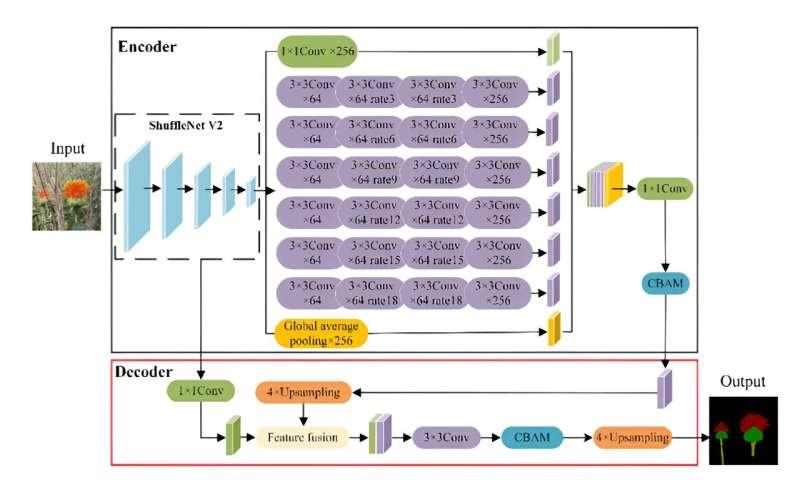Crop maps help scientists and policymakers track global food supplies and estimate how they might shift with climate change and growing populations. But getting accurate maps of the types of crops that are grown from farm to farm often requires on-the-ground surveys that only a handful of countries have the resources to maintain.
Now, MIT engineers have developed a method to quickly and accurately label and map crop types without requiring in-person assessments of every single farm. The team’s method uses a combination of Google Street View images, machine learning, and satellite data to automatically determine the crops grown throughout a region, from one fraction of an acre to the next.
The researchers used the technique to automatically generate the first nationwide crop map of Thailand — a smallholder country where small, independent farms make up the predominant form of agriculture. The team created a border-to-border map of Thailand’s four major crops — rice, cassava, sugarcane, and maize — and determined which of the four types was grown, at every 10 meters, and without gaps, across the entire country. The resulting map achieved an accuracy of 93 percent, which the researchers say is comparable to on-the-ground mapping efforts in high-income, big-farm countries.
The team is applying their mapping technique to other countries such as India, where small farms sustain most of the population but the type of crops grown from farm to farm has historically been poorly recorded.
“It’s a longstanding gap in knowledge about what is grown around the world,” says Sherrie Wang, the d’Arbeloff Career Development Assistant Professor in MIT’s Department of Mechanical Engineering, and the Institute for Data, Systems, and Society (IDSS). “The final goal is to understand agricultural outcomes like yield, and how to farm more sustainably. One of the key preliminary steps is to map what is even being grown — the more granularly you can map, the more questions you can answer.”
Wang, along with MIT graduate student Jordi Laguarta Soler and Thomas Friedel of the agtech company PEAT GmbH, will present a paper detailing their mapping method later this month at the AAAI Conference on Artificial Intelligence.

Ground truth
Smallholder farms are often run by a single family or farmer, who subsist on the crops and livestock that they raise. It’s estimated that smallholder farms support two-thirds of the world’s rural population and produce 80 percent of the world’s food. Keeping tabs on what is grown and where is essential to tracking and forecasting food supplies around the world. But the majority of these small farms are in low to middle-income countries, where few resources are devoted to keeping track of individual farms’ crop types and yields.
Crop mapping efforts are mainly carried out in high-income regions such as the United States and Europe, where government agricultural agencies oversee crop surveys and send assessors to farms to label crops from field to field. These “ground truth” labels are then fed into machine-learning models that make connections between the ground labels of actual crops and satellite signals of the same fields. They then label and map wider swaths of farmland that assessors don’t cover but that satellites automatically do.
“What’s lacking in low- and middle-income countries is this ground label that we can associate with satellite signals,” Laguarta Soler says. “Getting these ground truths to train a model in the first place has been limited in most of the world.”
The team realized that, while many developing countries do not have the resources to maintain crop surveys, they could potentially use another source of ground data: roadside imagery, captured by services such as Google Street View and Mapillary, which send cars throughout a region to take continuous 360-degree images with dashcams and rooftop cameras.
In recent years, such services have been able to access low- and middle-income countries. While the goal of these services is not specifically to capture images of crops, the MIT team saw that they could search the roadside images to identify crops.
Cropped image
In their new study, the researchers worked with Google Street View (GSV) images taken throughout Thailand — a country that the service has recently imaged fairly thoroughly, and which consists predominantly of smallholder farms.
Starting with over 200,000 GSV images randomly sampled across Thailand, the team filtered out images that depicted buildings, trees, and general vegetation. About 81,000 images were crop-related. They set aside 2,000 of these, which they sent to an agronomist, who determined and labeled each crop type by eye. They then trained a convolutional neural network to automatically generate crop labels for the other 79,000 images, using various training methods, including iNaturalist — a web-based crowdsourced biodiversity database, and GPT-4V, a “multimodal large language model” that enables a user to input an image and ask the model to identify what the image is depicting. For each of the 81,000 images, the model generated a label of one of four crops that the image was likely depicting — rice, maize, sugarcane, or cassava.
The researchers then paired each labeled image with the corresponding satellite data taken of the same location throughout a single growing season. These satellite data include measurements across multiple wavelengths, such as a location’s greenness and its reflectivity (which can be a sign of water).
“Each type of crop has a certain signature across these different bands, which changes throughout a growing season,” Laguarta Soler notes.
Click here to see more...